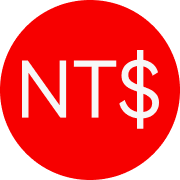



HUF information
About the Hungarian Forint (HUF)
What Is the Hungarian Forint (HUF)?
The Hungarian Forint (HUF), symbolized as Ft, is the national currency of Hungary. It was introduced in 1946 to stabilize the Hungarian economy after World War II, replacing the pengő which had suffered from extreme hyperinflation. The Hungarian Forint is the sole legal tender in Hungary.
The Hungarian Forint is issued and managed by the Hungarian National Bank, known in Hungarian as Magyar Nemzeti Bank. This central bank of Hungary is responsible for maintaining the stability of the national currency, controlling its circulation, and implementing monetary policy in alignment with the country's economic objectives. The Hungarian National Bank plays a crucial role in the financial system of Hungary, including the issuance of banknotes and coins in various denominations of the Forint.
What Is the History of HUF?
The Forint’s name originates from the city of Florence, where gold coins, known as fiorino d'oro, were minted from 1252. Hungary adopted a similar gold-based currency, the Florentinus, under Charles Robert in 1325. The forint was also the currency of the Austro-Hungarian Empire between 1868 and 1892. The modern Forint was reintroduced on August 1, 1946, replacing the pengő, which had suffered from severe hyperinflation post-World War II.
Notes and Coins of HUF
Hungarian banknotes are issued in denominations of 500, 1000, 2000, 5000, 10,000, and 20,000 forints, each featuring prominent Hungarian historical figures and landmarks. Coins come in 5, 10, 20, 50, 100, and 200 forint denominations. The Forint was initially subdivided into 100 fillér, but these coins were phased out due to inflation.
Economic Stability and Exchange Rates
The economic stability of the Hungarian Forint (HUF) has been a journey of significant transformation, especially since the fall of communism and Hungary's transition to a market economy. In the early 1990s, this shift brought about considerable inflation, peaking at 35% in 1991. However, the subsequent years saw a stabilization effort, with inflation dropping to single digits between 2001 and 2022. This period of relative stability was disrupted in February 2023 when inflation climbed to 25.80%, influenced by global economic factors such as the war in Ukraine and broader economic uncertainties. Despite these challenges, the Forint has maintained its status as a fully convertible currency, crucial for Hungary's trade and economic relations.
The exchange rate of the Hungarian Forint has seen fluctuations reflective of both domestic economic policies and global financial trends. As Hungary is a member of the European Union but has not adopted the Euro, the Forint’s value against the Euro and other major currencies like the U.S. dollar is a critical economic indicator
Why Doesn’t Hungary Use the Euro?
Hungary has not adopted the Euro for several reasons, despite initial plans to do so. Initially, Hungary aimed to replace the Hungarian Forint with the Euro around 2007 or 2008, later targeting January 1, 2010. However, these plans were abandoned due to high budget deficits, inflation, and public debt, preventing Hungary from meeting the Maastricht criteria. The global financial crisis of 2008 further complicated matters, despite aid from the IMF, EU, and World Bank. The Fidesz government, elected in 2010, has shown a soft Eurosceptic stance, maintaining the Forint and postponing discussions about adopting the Euro. Prime Minister Viktor Orbán stated that Euro adoption would not be considered until Hungary's public debt reached a 50% threshold, a significant reduction from its level in 2011.
Additionally, broader reasons why some EU countries, including Hungary, choose not to adopt the Euro involve maintaining financial independence. This independence allows for control over key issues like setting monetary policy, handling national debt, modulating inflation, and the ability to devalue the currency in certain circumstances. The European Central Bank sets economic and monetary policies for all Eurozone nations, which means individual states lack the independence to craft policies tailored to their own conditions. This lack of economic independence and the desire to maintain control over national financial policies contribute to Hungary's decision to retain the Forint instead of adopting the Euro.
SMILEK to HUF conversion rate trend
SMILEK to HUF market statistics
More info about Smilek to the Bank on Bitget
Current SMILEK to HUF exchange rate
Smilek to the Bank to Hungarian Forint is falling this week.SMILEK to HUF Conversion tables
The exchange rate of Smilek to the Bank is decreasing.SMILEK to HUF
HUF to SMILEK
SMILEK to HUF Today vs. 24 hours ago
| Amount | 20:07 today | 24 hours ago | 24h change |
|---|---|---|---|
| 0.5 SMILEK | Ft0.{5}3248 | Ft0.{5}3031 | +7.15% |
| 1 SMILEK | Ft0.{5}6496 | Ft0.{5}6062 | +7.15% |
| 5 SMILEK | Ft0.{4}3248 | Ft0.{4}3031 | +7.15% |
| 10 SMILEK | Ft0.{4}6496 | Ft0.{4}6062 | +7.15% |
| 50 SMILEK | Ft0.0003248 | Ft0.0003031 | +7.15% |
| 100 SMILEK | Ft0.0006496 | Ft0.0006062 | +7.15% |
| 500 SMILEK | Ft0.003248 | Ft0.003031 | +7.15% |
| 1000 SMILEK | Ft0.006496 | Ft0.006062 | +7.15% |
SMILEK to HUF Today vs. 1 month ago
| Amount | 20:07 today | 1 month ago | 1M change |
|---|---|---|---|
| 0.5 SMILEK | Ft0.{5}3248 | Ft0.{5}9448 | -65.62% |
| 1 SMILEK | Ft0.{5}6496 | Ft0.{4}1890 | -65.62% |
| 5 SMILEK | Ft0.{4}3248 | Ft0.{4}9448 | -65.62% |
| 10 SMILEK | Ft0.{4}6496 | Ft0.0001890 | -65.62% |
| 50 SMILEK | Ft0.0003248 | Ft0.0009448 | -65.62% |
| 100 SMILEK | Ft0.0006496 | Ft0.001890 | -65.62% |
| 500 SMILEK | Ft0.003248 | Ft0.009448 | -65.62% |
| 1000 SMILEK | Ft0.006496 | Ft0.01890 | -65.62% |
SMILEK to HUF Today vs. 1 year ago
| Amount | 20:07 today | 1 year ago | 1Y change |
|---|---|---|---|
| 0.5 SMILEK | Ft0.{5}3248 | Ft0.001353 | -99.76% |
| 1 SMILEK | Ft0.{5}6496 | Ft0.002706 | -99.76% |
| 5 SMILEK | Ft0.{4}3248 | Ft0.01353 | -99.76% |
| 10 SMILEK | Ft0.{4}6496 | Ft0.02706 | -99.76% |
| 50 SMILEK | Ft0.0003248 | Ft0.1353 | -99.76% |
| 100 SMILEK | Ft0.0006496 | Ft0.2706 | -99.76% |
| 500 SMILEK | Ft0.003248 | Ft1.35 | -99.76% |
| 1000 SMILEK | Ft0.006496 | Ft2.71 | -99.76% |
How to convert SMILEK to HUF



Buy SMILEK (or USDT) for HUF (Hungarian Forint) offers
| Merchants (trades/completion rate) | Price | Amount/limit Low to high | Payment methods | Zero fees Action |
|---|
Sell SMILEK (or USDT) for HUF (Hungarian Forint) offers
| Merchants (trades/completion rate) | Price | Amount/limit High to low | Payment methods | Zero fees Action |
|---|
What factors influence the conversion rate of SMILEK to HUF?
Smilek to the Bank price prediction
What will the price of SMILEK be in 2026?
What will the price of SMILEK be in 2031?
Other crypto price predictions
 Bitcoin(BTC)Price predictions
Bitcoin(BTC)Price predictions Ethereum(ETH)Price predictions
Ethereum(ETH)Price predictions Celestia(TIA)Price predictions
Celestia(TIA)Price predictions Solana(SOL)Price predictions
Solana(SOL)Price predictions Worldcoin(WLD)Price predictions
Worldcoin(WLD)Price predictions Bittensor(TAO)Price predictions
Bittensor(TAO)Price predictions Dogecoin(DOGE)Price predictions
Dogecoin(DOGE)Price predictions PepeCoin(PEPECOIN)Price predictions
PepeCoin(PEPECOIN)Price predictions Pandora(PANDORA)Price predictions
Pandora(PANDORA)Price predictions ORDI(ORDI)Price predictions
ORDI(ORDI)Price predictionsBitget Earn
APR
Purchase other cryptocurrencies with similar market cap
Popular Smilek to the Bank Converter









Popular cryptocurrencies to HUF










Discover more cryptocurrencies
Latest coin listings on Bitget
FAQ
What is a cryptocurrency calculator?
How does a cryptocurrency calculator work?
How accurate is a cryptocurrency calculator?
Can I trust the results of a cryptocurrency calculator?
Can I use a cryptocurrency calculator for tax purposes?
Can a cryptocurrency calculator be used to convert one type of cryptocurrency to another?






































